
Asterivora is a genus of moths in the family Choreutidae. Asterivora was described by J. S. Dugdale in 1979. The type species is Asterivora combinatana.
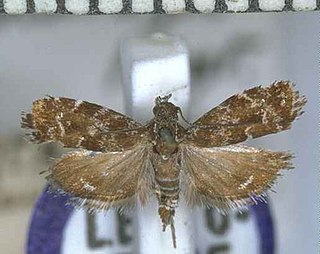
Asterivora analoga is a moth of the family Choreutidae. It is endemic to New Zealand and has been observed in both the North and South Islands. Adults are on the wing in December and January.
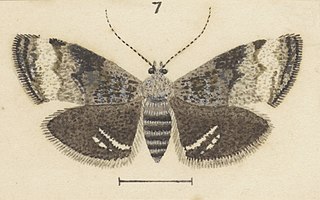
Asterivora albifasciata is a species of moth in the family Choreutidae. It is endemic to New Zealand and has been observed on both the North and South Islands. The adults of this species are on the wing in December and January. Larvae of this species have been raised on Celmisia brevifolia.
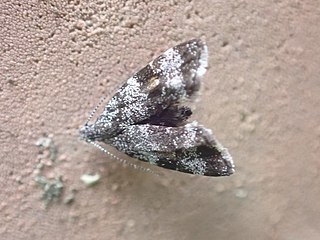
Asterivora antigrapha is a moth in the family Choreutidae. It is endemic to New Zealand and has been observed in the North and South Island. This species inhabits the edge of scrubland. The adults are on the wing in November and December. This species can be found flying the day. It has been hypothesised that this species hibernates over winter.

Asterivora chatuidea is a moth of the family Choreutidae. It is endemic to New Zealand and has been collected in and around Dunedin. The larvae of this species are leaf miners and hosts include Helichrysum lanceolatum, Olearia quinquevulnera and Pseudognaphalium luteoalbum. Adults of this species has been recorded as being on the wing in November, January and February.

Asterivora colpota is a moth in the family Choreutidae. It was first described by Edward Meyrick in 1911. It is endemic to New Zealand and is found throughout the North and South Islands. It is regarded as a lowland species and adults are on the wing from November until March. This moth has been collected by beating shrubs.
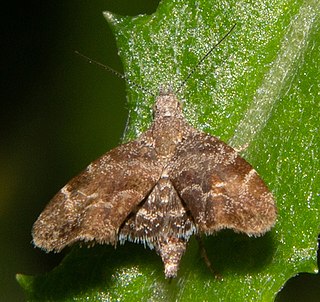
Asterivora combinatana is a species of moth in the family Choreutidae. It is endemic to New Zealand and has been observed at locations in both the North and South Islands. The larvae feed on Senecio bellidioides and Brachyglottis repanda either from within a silken gallery or alternatively a silken curtain under which they feed. It is double brooded with adults being on the wing from September until November and again from February until April. This species is a day flying moth. It is extremely variable both in colouration and in size. The female tends to be larger and paler than the male of the species.

Asterivora exocha is a species of moth in the family Choreutidae. It was first described by Edward Meyrick in 1907 and is endemic to New Zealand. This species has only been observed in the Humboldt Ranges of Otago and inhabits subalpine native bush at elevations of around 3600 ft. Adults of this species are on the wing in December and January and have been observed flying at dusk.

Asterivora fasciata is a species of moth in the family Choreutidae. It is endemic to New Zealand and has been found at Arthur's Pass. The larvae of this species have been reared on Celmisia densiflora and adults are on the wing in January.
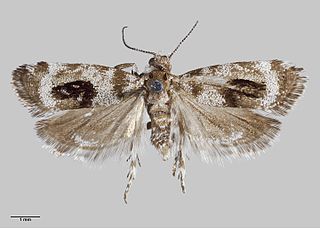
Asterivora inspoliata is a species of moth in the family Choreutidae. It is endemic to New Zealand and has been found in the southern parts of the South Island. Adults are on the wing in December and January.

Asterivora iochondra is a species of moth in the family Choreutidae. It is endemic to New Zealand and was first described by Edward Meyrick in 1911. This species has been observed in both the North and South Island at Mount Holdsworth and Mount Arthur. This species inhabits open spaces on mountains on the forest edge at 3000 ft altitude. Adults of this species are on the wing in February and flies rapidly in sunshine.
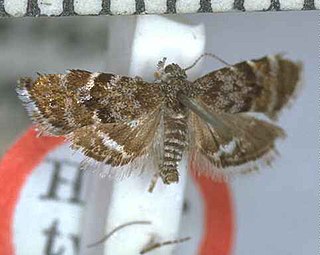
Asterivora marmarea is a species of moth in the family Choreutidae. It is endemic to New Zealand and lives in mountainous habitats. It has been observed in the lower parts of the North Island and the upper South Island. The larval host of this species is Celmisia gracilenta and adults of this species are on the wing in December and January.
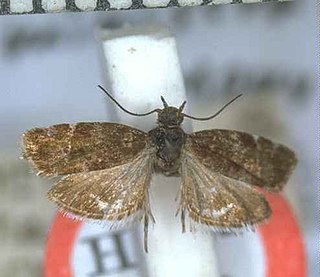
Asterivora ministra is a species of moth in the family Choreutidae. It is endemic to New Zealand and has been observed at Mount Holdsworth and Mount Arthur. This species inhabits alpine native herbage above the tree line. The adults are on the wing in February.
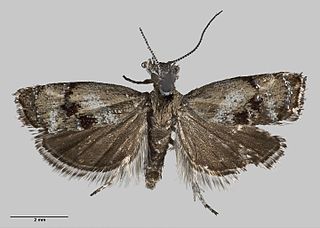
Asterivora urbana is a species of moth in the family Choreutidae. It is endemic to New Zealand and has been observed in Arthur's Pass. Adults are on the wing in January.

Asterivora nivescens is a species of moth in the family Choreutidae. It is endemic to New Zealand and has been observed in Nelson. This species inhabits native herbage on mountain sides. Adults of this species are on the wing in January.
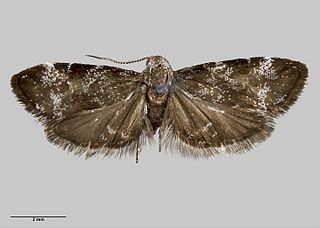
Asterivora tristis is a species of moth in the family Choreutidae. It is endemic to New Zealand and has been observed in Tongariro National Park. Adults of this species are on the wing in January.

Asterivora tillyardi is a species of moth in the family Choreutidae. It is endemic to New Zealand and collected at Aoraki / Mount Cook. Adults of this species are on the wing in March.
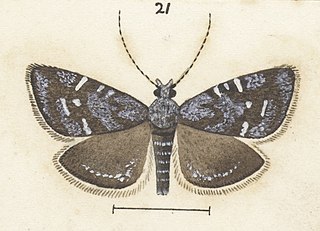
Asterivora symbolaea is a species of moth in the family Choreutidae. It is endemic to New Zealand and has been observed in Arthur's Pass. This species lives in subalpine habitat. Adults of this is on the wing in January and February. Larvae are hosted by Celmisia prorepens.
Izatha oleariae is a species of moth in the family Oecophoridae. It is endemic to New Zealand. This species is classified as "At Risk, Naturally Uncommon" by the Department of Conservation. It is only found on the Snares Islands.

Thiotricha oleariae is a moth of the family Gelechiidae. It is endemic to in New Zealand, where it has been recorded from the central part of the North Island south down to Stewart Island. The species is found at altitudes of between sea-level up to 900 metres. The larvae live in a constructed case, are leaf miners and are active in November. The larval host species are within in the genus Olearia. Adults are nocturnal and on the wing from November to March.



















